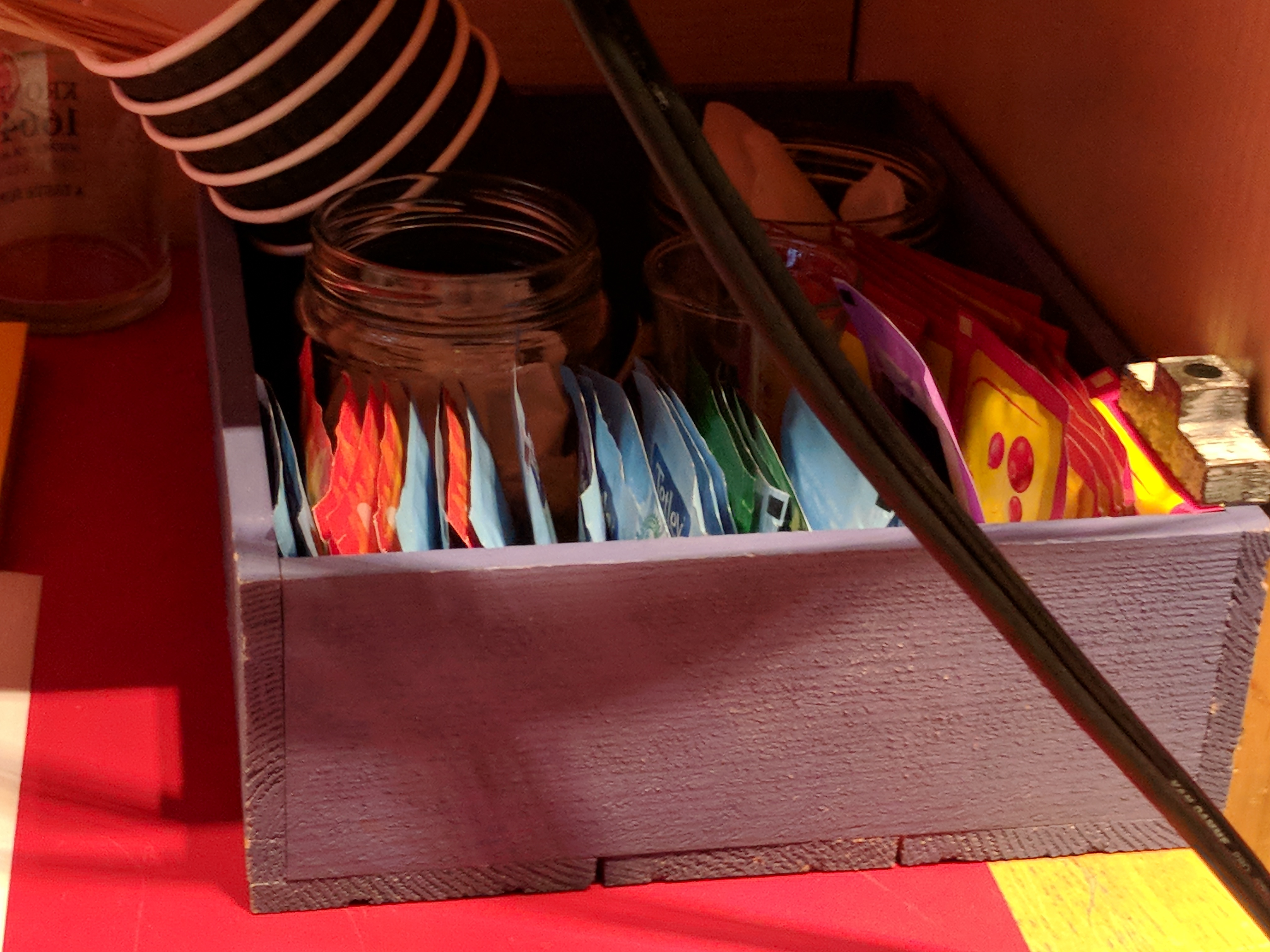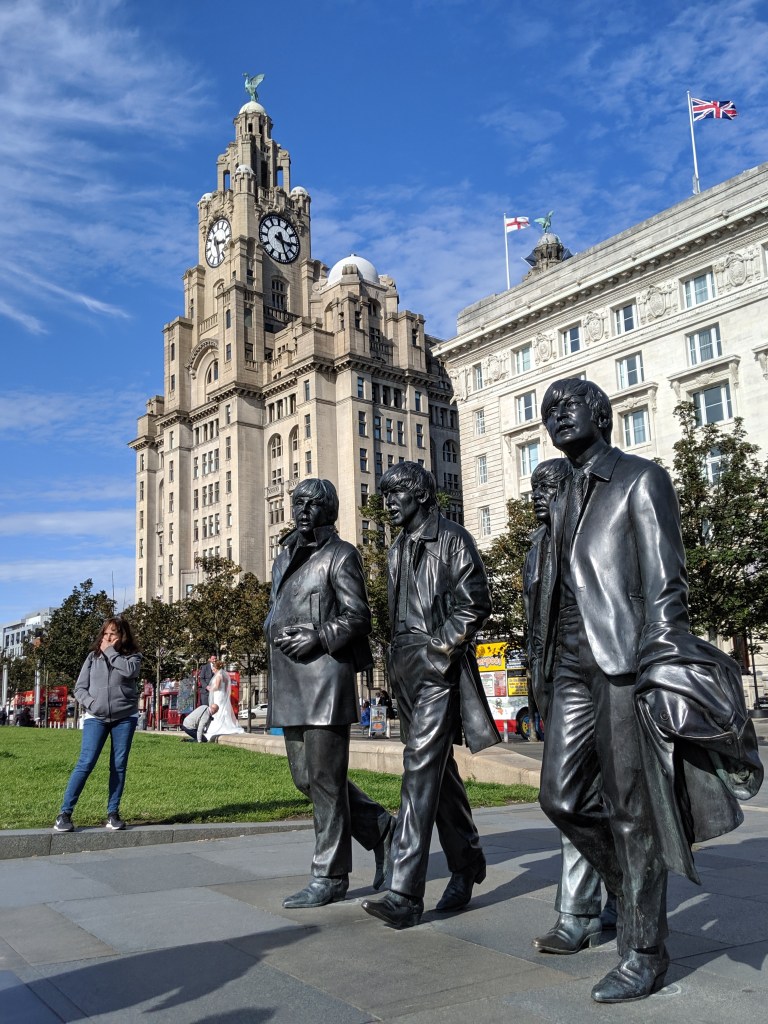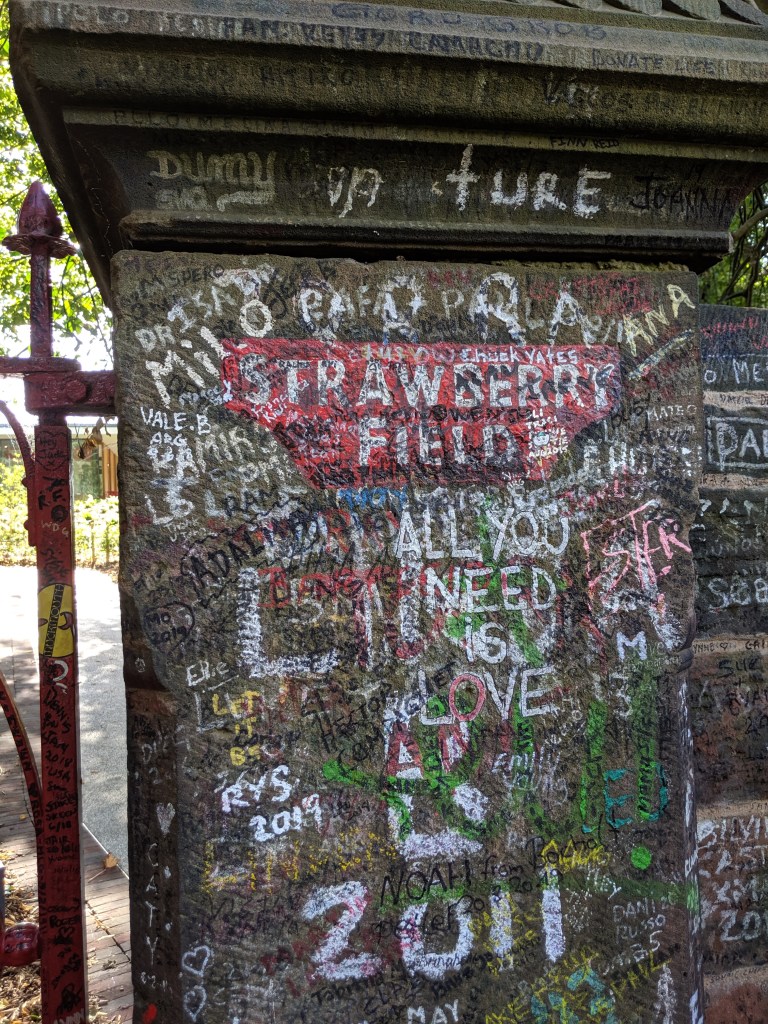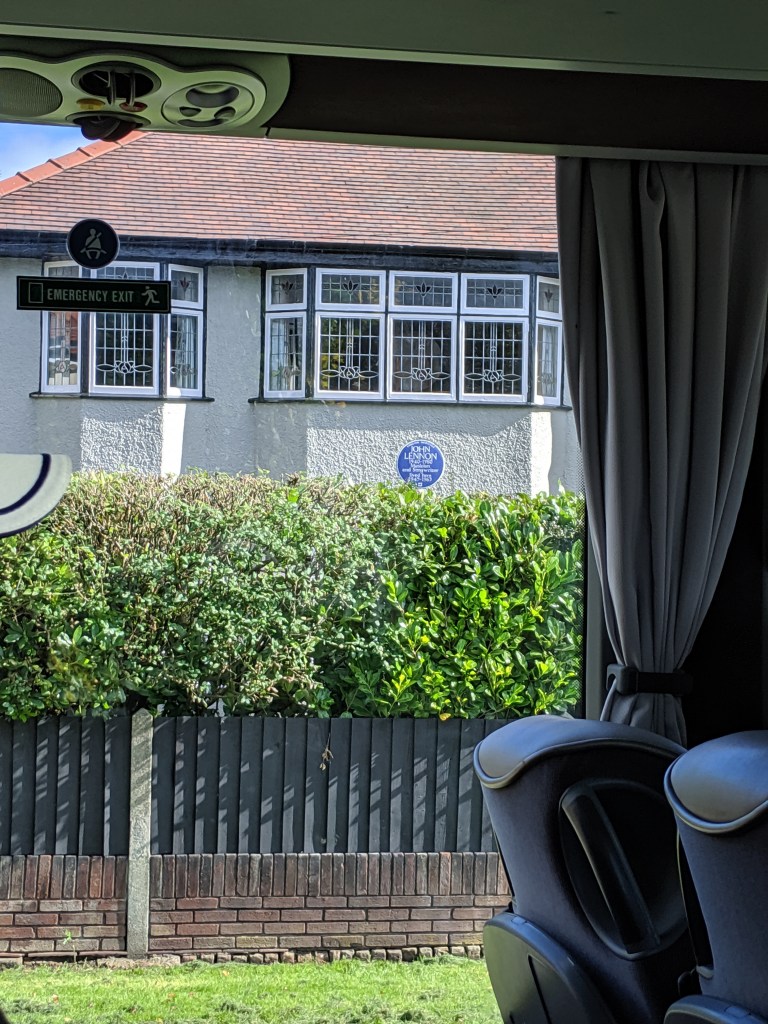
A selfie of me internally squeeing with joy as I stand in Studio Two, where a majority of the Beatles’ songs were recorded.
You all know of course that I am a huge Beatles fan and music history nerd. I’m not a fan that wishes I’d been in the deafening audiences of their live shows, no…I’m a fan that geeks out about how their sound was created. So when our London vacation just happened to coincide with a special open house/historical presentation at Abbey Road Studios, I simply could NOT pass it up. [The presentation was by Brian Kehew and Kevin Ryan, authors of Recording the Beatles, a book about how each song was recorded in the facility.]

The famous Abbey Road crosswalk from the other direction. Photographer Iain Macmillan would have been standing on a stepladder right about where that car is on the right side to take the picture.
We arrived there about twenty minutes before doors-open to an already longish line, where there were a few hundred of us waiting to get in. Once past security (which was understandably tight), we were led into the front doors and into the main entryway. As I walked through I was immediately reminded of this particular set of Beatles interviews done on 20 December 1966 (they were heading in to work on “When I’m Sixty-Four”, and the interviews were staged specifically to combat recent ‘are they breaking up’ rumors).
Before we were let in to Studio Two, however, they let us take a doorway peek into the amazingly HUGE and cavernous Studio One, usually used for orchestras but occasionally used for Beatle work (“All You Need Is Love” and “I Am the Walrus”, and the various songs from The Beatles laid down while other members were in Two or Three working on something else).

Trivia: A possible 70s renovation would have split this room into two smaller upstairs studios and the ground floor into a parking garage. Thankfully it was nixed.
We were then led into Studio Two across the hall, another cavernous room but not quite as large. Upon entering, you can’t help but think just how unique this studio is, considering that most modern studios are infinitely smaller. These were created in the 30s mainly for pop and orchestral pieces (trivia: they were extensions of the smaller main mansion, built over the back gardens of two different plots).

The main stairway up to the control room. There are stories that John and Paul used to slide down the railing after popping up there to listen to a playback with George Martin. Also of note: that small room to the right with the red wall was once the original control room and is now a practice room.
They let us walk around a bit, checking out the various instruments and equipment they had set up. Most of these instruments were used by the Beatles and are still used by others to this day, by the way! Including many pianos:

A Steinway Vertegrand, recognizable by its bright tone. Played on “Penny Lane”. More on this one in a moment…

The Challen piano, known for its warmer tones. Played on “The Fool on the Hill”.

The Steinway grand (which gives a lovely full sound). Played on numerous tracks.

And of course the Hammond BT3 organ, also used on numerous tracks.
We also got to go upstairs to the main control room. It’s a much smaller room of course, and the mixing desks have definitely changed over the years from the pots and shifters to a sea of knobs, buttons and everything else.

A view from the top of the stairs. Of note, the opposite far corner is where the Beatles used to hang out most to record, Ringo usually in the corner facing out, Paul and George to the left and John to the right — just like their live setup.

The main mixing desk. I can’t even begin to figure out how this thing would work. They’ve indeed come a long, LONG way from four tracks in the sixties. No picture taken, but across the room from this desk is a super-tiny room: in the 60s this was the sound effects cupboard, which was temporarily cleaned out on 13 August 1968 so the Beatles could record “Yer Blues.”

Completely innocuous and unimportant, but I was tickled to have found their Secret Tea Stash hiding under one of the speakers in the control room. It gave the otherwise highly technical room a bit of warmth and humanity.
The presentation itself lasted about ninety minutes and was a fantastic historical overview of the studio itself; Kehew and Ryan had not only done research on the Beatles recordings but on its origins. They touched on all sorts of things such as its inaugural first recording of Elgar recording his Pomp and Circumstance marches (and its true first recording, a test run of a song by Paul Robeson!), its numerous renovations to improve the sound of each studio, and more. Eventually they’d hit upon the Beatles’ tenure there, talking their relentless work ethic, continuous experimentation with sounds, and more.
At one point one of them got up from the stage and wandered over to the pianos and explained what they were, their differences in sound, and what they were used on. This was really neat, as he proceeded to play certain songs on them, like the jabbing chords of “Penny Lane” and the soft taps of “The Fool on the Hill.”
Then he said, “We’d like to do something fun now. I’d like to ask four piano players to–”
I shot my hand up. I knew EXACTLY what he was up to. I’d never forgive myself if I passed this by.
Let’s take a look at that Steinway Vertegrand again:

See those green dots? Yep. They’re E chords. One person stood next to me and hit the low octave, and I hit the two chords and held down the sustain pedal.
Three, two, one, THOOOOOMMMMMmmmmmmm.
The famous final chord of “A Day in the Life”.
The first attempt was a bit off, but OH MAN did it sound magical. Sent shivers down my spine. And since the face was open and the strings were right in my face, I got the full blast of sound. I was so lost in it I forgot to lift the sustain and everyone started laughing.
The second attempt sounded even better, as we let it ring for a good twenty seconds.
I can die a happy man now.
Back down on Earth, the presentation continued, talking about the post-Beatles recordings, from Pink Floyd and The Dark Side of the Moon to the movie scores such as the Harry Potter films. Interestingly, the other bit that gave me shivers was a brief explanation and playback on the use of sound effects, specifically on the opening to Pink Floyd’s “Time”. They must have used remastered source tapes for that bit, as the simulated heartbeat and the delicate sound of the Shiedmayer celeste (below) almost brought me to tears, it sounded so gorgeous.

They wrapped up the presentation with a brief overview of what they’re working on nowadays — numerous rock bands still record there (including Paul McCartney, who recorded his upcoming release there), and they’re one of the main go-to facility for movie scores.
I’ve always said the studio’s sound is definitely unique, in that there’s a specific warmth, fullness and resonance to it that you can always pick out. I would totally record there if I was a professional musician, that’s for sure. Not just because my favorite band recorded there, but because it truly is a fantastic place for sound.
One added and quite unexpected bonus: Now that I’ve seen Studio Two with my own eyes, I realized I could now visualize where the Beatles recorded in this room, down to the space between them, and how it would sound in that room. On the flight home I found myself listening to The Beatles and started visualizing the four of them recording the main takes of “While My Guitar Gently Weeps” (which, serendipitously, they’d started exactly fifty years to the day I listened to it!) in that big place. Suffice it to say, I heard it in a whole new way. And now I’m planning on relistening to the rest of their recordings for the same reason.
All in all, one of the most amazing musical experiences I’ve ever had in my life.
Oh, and we got VIP badges out of it!






























